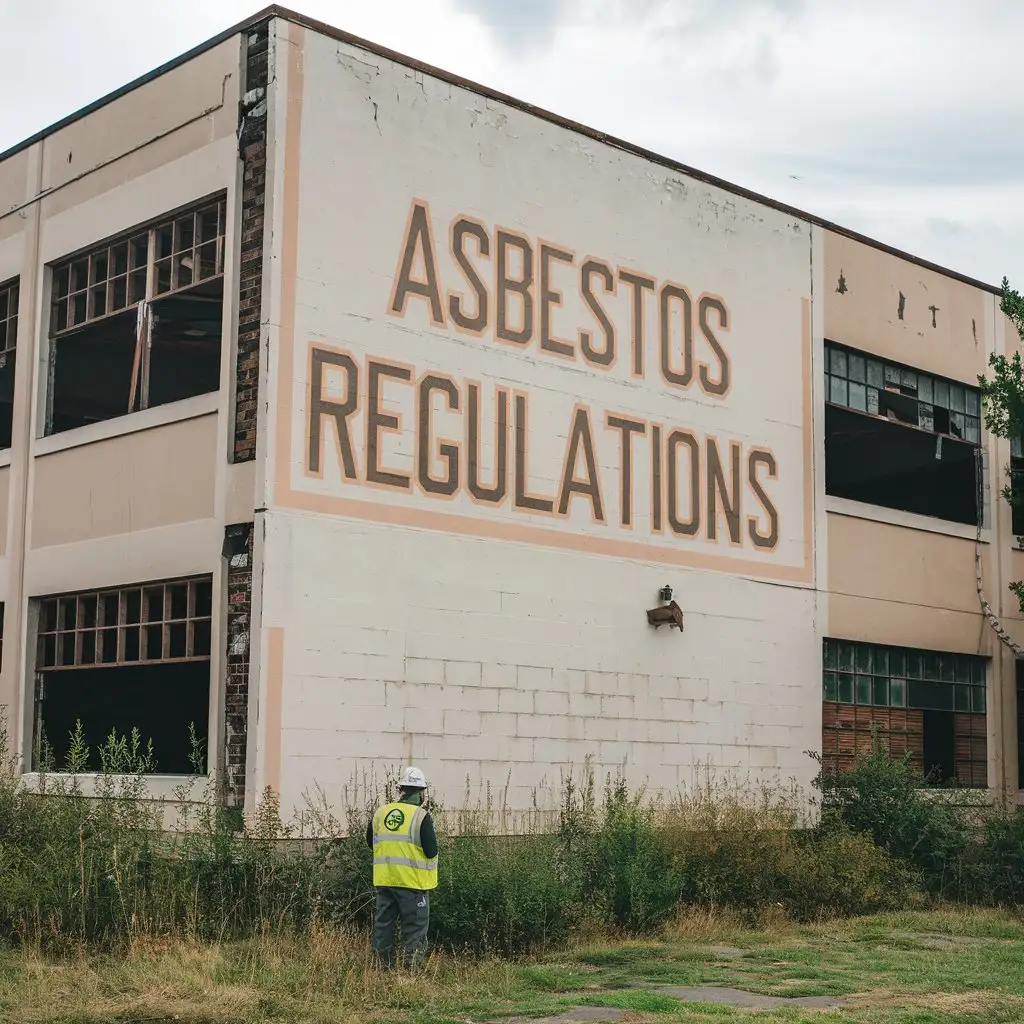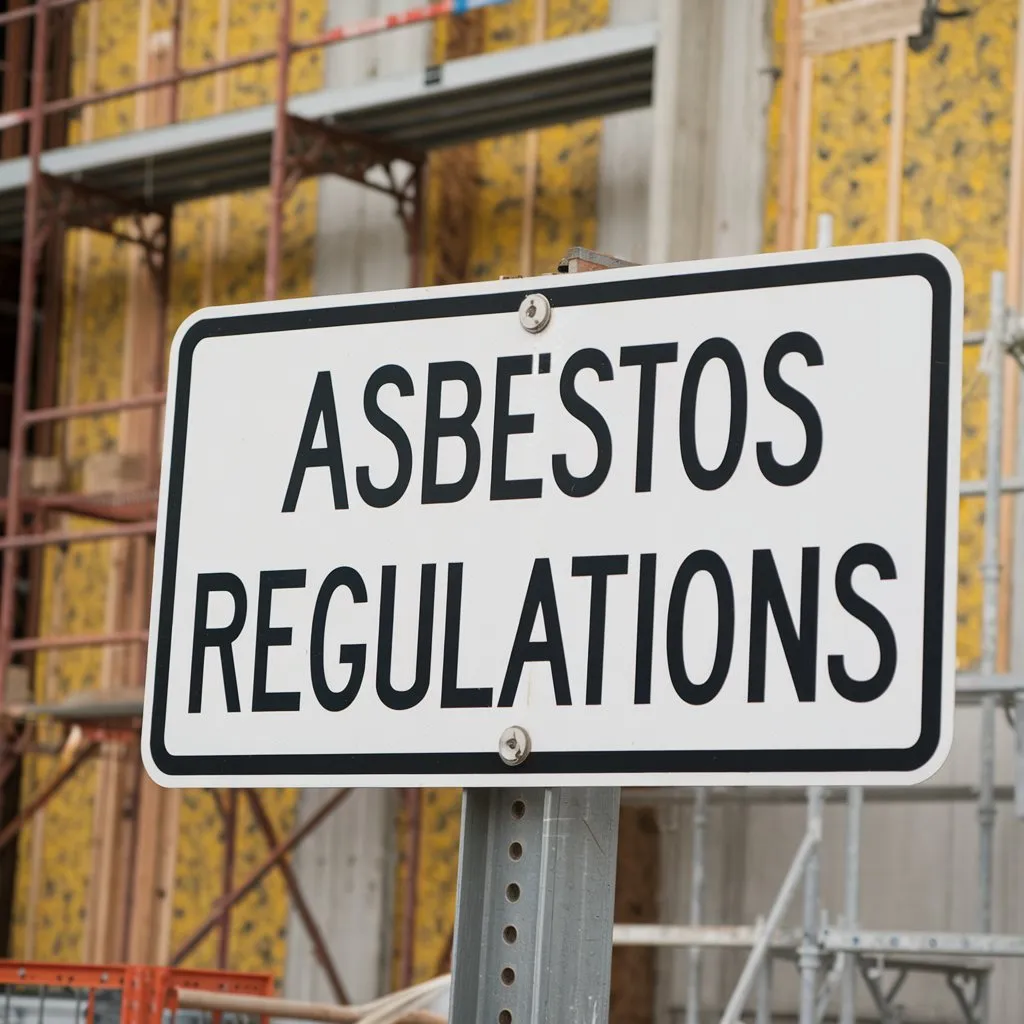Asbestos is a hazardous material that has been linked to serious health issues, including lung cancer, mesothelioma, and asbestosis. Due to its dangerous nature, various regulations have been put in place worldwide to ensure the safe handling, removal, and disposal of asbestos-containing materials (ACMs). These regulations aim to protect workers, homeowners, and the general public from exposure to harmful asbestos fibers. In this article, we will explore the key asbestos regulations, their importance, and how they are enforced to safeguard health and safety.
What Are Asbestos Regulations?
Asbestos regulations refer to the laws, rules, and guidelines that govern the use, handling, removal, and disposal of asbestos-containing materials (ACMs). These regulations are designed to minimize the risks of asbestos exposure, which can occur during construction, demolition, or maintenance activities that disturb asbestos-containing materials.
Different countries have their own asbestos regulations, but many share common principles for ensuring safety. These regulations are often enforced by government agencies responsible for worker health and environmental protection.
Why Are Asbestos Regulations Important?
Asbestos exposure is a serious health hazard that can lead to life-threatening diseases such as lung cancer, asbestosis, and mesothelioma. Asbestos fibers are microscopic and can remain suspended in the air for long periods. When inhaled, these fibers can lodge in the lungs, leading to long-term health issues. Because of these risks, asbestos regulations are crucial in preventing exposure, especially in high-risk industries like construction, renovation, and demolition.
Some of the key reasons why asbestos regulations are important include:
- Protecting Workers: Construction and demolition workers are at high risk of asbestos exposure, especially in older buildings. Regulations ensure they have the necessary protections and guidelines to minimize exposure.
- Public Safety: Asbestos exposure can also affect the general public if asbestos-containing materials are disturbed in public spaces or residential buildings.
- Environmental Protection: Asbestos regulations also help ensure that asbestos waste is disposed of safely, preventing contamination of the environment.
Key Asbestos Regulations in the United States

In the United States, asbestos regulations are enforced by several agencies at the federal and state levels. Some of the most important regulations include:
1. The Occupational Safety and Health Administration (OSHA) Standards
The Occupational Safety and Health Administration (OSHA) is the primary federal agency responsible for protecting workers from asbestos exposure in the workplace. OSHA has set strict permissible exposure limits (PELs) for asbestos in the air, which are designed to protect workers from the harmful effects of exposure. These limits are:
- 0.1 fibers per cubic centimeter (f/cc) of air over an 8-hour workday for asbestos in general.
- 1.0 f/cc for asbestos in construction work, as long as certain controls are in place.
In addition to setting exposure limits, OSHA also requires employers to implement specific safety measures to protect workers, including:
- Providing personal protective equipment (PPE), such as respirators.
- Ensuring proper ventilation in areas where asbestos is present.
- Regular monitoring of asbestos levels in the air.
- Implementing work practices that minimize asbestos fiber release.
2. The Environmental Protection Agency (EPA) Regulations
The Environmental Protection Agency (EPA) is responsible for regulating the use and disposal of asbestos in the United States. One of the key pieces of legislation is the Clean Air Act, which includes regulations on asbestos demolition and renovation activities. These regulations require that:
- Asbestos inspections must be conducted before any renovation or demolition activities.
- Asbestos-containing materials must be properly removed and handled before any demolition work can begin.
- Waste materials containing asbestos must be disposed of in approved landfill sites that are specifically designated for asbestos waste.
Additionally, the EPA’s Asbestos National Emission Standards for Hazardous Air Pollutants (NESHAP) governs the handling of asbestos during construction, demolition, and renovation activities. These regulations set guidelines for how asbestos must be removed, packaged, and disposed of to minimize the risk of fiber release into the air.
3. The Toxic Substances Control Act (TSCA)
The Toxic Substances Control Act (TSCA), administered by the EPA, regulates the manufacturing, importation, and use of asbestos-containing products in the United States. While asbestos is no longer widely used in construction and manufacturing, the TSCA still governs the use of existing asbestos products and ensures that their removal and disposal are done safely.
Under the TSCA, the EPA has the authority to ban or restrict the use of asbestos in specific products. In 1989, the EPA issued a proposed rule to ban most uses of asbestos, but this rule was later overturned. However, the TSCA still plays a key role in managing asbestos in existing products and regulating its safe use.
Asbestos Regulations in Other Countries

While asbestos regulations vary by country, most have similar goals of minimizing exposure and ensuring safe handling, removal, and disposal of asbestos-containing materials. Some of the key asbestos regulations in other countries include:
1. Canada
In Canada, asbestos regulations are enforced by Health Canada and the Canadian Environmental Assessment Agency (CEAA). Canada banned the use of asbestos in 2018, making it illegal to import, sell, or use asbestos-containing products. The Occupational Health and Safety Regulations in Canada also require employers to take steps to minimize asbestos exposure, including providing workers with PPE, ensuring proper ventilation, and monitoring asbestos levels.
2. European Union
The European Union (EU) has some of the most stringent asbestos regulations in the world. Asbestos use has been banned in all EU member states since 2005. The EU Asbestos Worker Protection Directive mandates that employers must assess asbestos exposure risks, implement proper control measures, and provide workers with appropriate protective gear. The directive also requires workers to be trained in handling asbestos safely.
3. Australia
In Australia, asbestos regulations are enforced by Safe Work Australia and state-level agencies. Australia banned the use of asbestos in 2003. The Work Health and Safety Act mandates that employers must eliminate or control asbestos exposure risks in the workplace, provide PPE, and ensure that workers receive proper training. Australia also has strict regulations regarding the removal, disposal, and transportation of asbestos-containing materials.
Asbestos Removal and Disposal Regulations
In addition to the regulations that govern the handling and use of asbestos, there are strict guidelines for asbestos removal and disposal. These regulations ensure that asbestos waste is properly managed to prevent contamination of the environment and to protect public health.
1. Safe Removal Practices
Asbestos removal must be conducted by licensed professionals trained in proper handling and safety measures. In many countries, including the United States, workers involved in asbestos removal must follow specific procedures:
- Containment: The work area must be sealed off to prevent the spread of asbestos fibers.
- Air filtration: High-efficiency particulate air (HEPA) filters must be used to capture airborne fibers.
- Personal protective equipment (PPE): Workers must wear protective suits, respirators, and gloves to prevent exposure.
2. Proper Disposal of Asbestos Waste
Asbestos waste must be disposed of in designated landfill sites that are equipped to handle hazardous waste. In most countries, regulations prohibit the disposal of asbestos waste in regular landfills. Asbestos-containing materials must be double-bagged, sealed in leak-tight containers, and labeled to inform handlers of the hazardous nature of the materials.
OSHA asbestos construction standard
The OSHA Asbestos Construction Standard is a set of regulations designed to protect construction workers from the dangers of asbestos exposure. These standards apply to any construction activities that might disturb asbestos-containing materials (ACMs). The Occupational Safety and Health Administration (OSHA) established these regulations to ensure that employers take the necessary precautions to reduce the risk of exposure to asbestos fibers, which can lead to serious health problems like lung cancer, asbestosis, and mesothelioma.
Here are the key points of the OSHA Asbestos Construction Standard (29 CFR 1926.1101):
1. Asbestos Exposure Limits
- Permissible Exposure Limit (PEL):
- The PEL for asbestos in the workplace is set at 0.1 fibers per cubic centimeter (f/cc) of air, averaged over an 8-hour work shift.
- Excursion Limit:
- No worker should be exposed to more than 1.0 f/cc of asbestos over a 30-minute period.
2. Workplace Requirements
- Notification and Monitoring: Employers must assess the asbestos exposure levels through air monitoring and take action if the exposure exceeds the permissible limits. Employees must be notified of the results.
- Engineering Controls: Employers must use methods such as ventilation, wet methods, or local exhaust ventilation to control airborne asbestos fibers.
- Personal Protective Equipment (PPE): Workers must wear appropriate protective gear, such as respirators and protective clothing, when working with or near asbestos-containing materials.
3. Regulated Areas
- Areas where asbestos work is performed must be designated as regulated areas. These areas should be clearly marked and restricted to authorized personnel who are properly equipped.
- Warning Signs must be posted in regulated areas to inform workers of the potential danger.
4. Respiratory Protection
- When exposure exceeds the permissible limits or if engineering controls do not adequately reduce asbestos levels, workers must wear proper respirators (e.g., half-mask or full-face respirators with a high-efficiency particulate air (HEPA) filter).
- Fit testing is required to ensure respirators provide adequate protection.
5. Training
- Employers are required to provide training to all employees who may be exposed to asbestos. This training should include:
- The dangers of asbestos exposure
- The proper use of protective equipment
- Emergency procedures for asbestos-related incidents
6. Medical Surveillance
- Workers who are exposed to asbestos above the permissible exposure limits must be provided with medical surveillance, which includes regular health check-ups and screenings for asbestos-related diseases.
7. Work Practices and Procedures
- Work practices must be designed to minimize asbestos exposure. This may include wetting asbestos materials to prevent fiber release, using negative pressure enclosures, and cleaning up using HEPA vacuums to remove asbestos fibers from the environment.
8. Waste Disposal
- Asbestos waste must be properly contained and disposed of in accordance with environmental regulations. It must be sealed in leak-tight containers and disposed of at licensed disposal sites.
9. Recordkeeping
- Employers must maintain records of air monitoring results, training, and medical surveillance. These records must be kept for a minimum of 30 years after the employee’s last exposure to asbestos.
10. Asbestos Removal and Demolition
- For asbestos abatement activities, strict procedures must be followed. The use of negative pressure and proper decontamination units for workers and equipment is required. Special removal techniques, including the use of gloves and suits, are mandated to reduce exposure.
11. Emergency Procedures
- In the event of an asbestos-related emergency (e.g., accidental release of fibers), a clear emergency plan must be in place. This plan should include evacuation procedures, emergency decontamination, and reporting to relevant authorities.
Enforcement and Penalties
- OSHA actively enforces these standards and can impose penalties on employers who fail to comply with the regulations. Penalties can range from citations to significant fines for serious violations of asbestos safety standards.
Conclusion
Asbestos regulations are essential for protecting public health and safety. They set standards for how asbestos should be handled, removed, and disposed of to prevent exposure to harmful fibers. Whether in the United States, Canada, the European Union, or Australia, these regulations play a crucial role in reducing the risks associated with asbestos exposure, especially in high-risk industries like construction and demolition.
If you work in an environment where asbestos is present or suspect that your home may contain asbestos, it is important to follow the local regulations and consult with licensed professionals for safe removal and disposal. Understanding and adhering to asbestos regulations is key to ensuring a safe environment for everyone.
Contact Us For more
Email: [email protected]
Phone Number: +937 252-4724
Address: 2617 S Smithville Rd, Dayton, Oh, United States

Dr. Chris Cameron is a leading asbestos expert with over two decades of experience in occupational and environmental health. He holds a Ph.D. in Environmental Science and has worked extensively with government agencies, private sector organizations, and health and safety regulators to assess, manage, and mitigate asbestos-related risks. Dr. Cameron is widely recognized for his research on asbestos exposure, remediation strategies, and public health policy